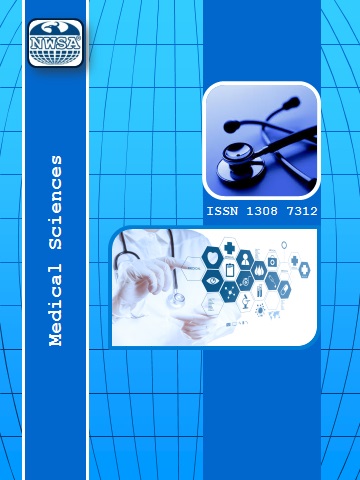THE VALUE OF DIAGNOSTIC ULTRASONOGRAPHIC IMAGING (US) IN BREAST DISEASES
Yasemen ADALI1
,
Sibel KARAYOL2
,
Uğur BULUT3
Breast diseases are more common in women today, but they also affect men. Although the precise diagnosis of breast diseases is histopathological, ultrasonographic imaging (US) is a guide for diagnosis and treatment planning. We aimed to evaluate the efficacy of US in breast diseases. 133 cases were included in the study whose biopsies are taken in a university hospital. The cases without pre-biopsy US's were excluded from study. In cases; the sensitivity, specificity, diagnostic accuracy, positive and negative predictive values of US were calculated based on histopathological examination which is the gold standard. The mean age of the cases is 44.62+17.24. 97.7% of the cases were female and 2.3% were male. Histopathological findings of the cases were reported as 6% normal breast tissue, 61.7% benign lesions, 6.8% carcinoma insitu and 25.6% malignant. The sensitivity of US was 91.1%, the diagnostic accuracy was 92.5% and the positive predictive value was 82.9%. US is an important method in the management of breast lesions in patients with high sensitivity and diagnostic accuracy. However, the specificity and negative predictive value of US cannot be assessed because there are no true negative cases in our study. We suggest that these data should be evaluated in larger series including healthy cases.
Keywords
Breast,
USG,
Diagnostic Sensitivity,
Diagnostic Accuracy,
Definitive Diagnosis,
 +90(533) 652 66 86
+90(533) 652 66 86 nwsa.akademi@hotmail.com
nwsa.akademi@hotmail.com Fırat Akademi Samsun-Türkiye
Fırat Akademi Samsun-Türkiye
